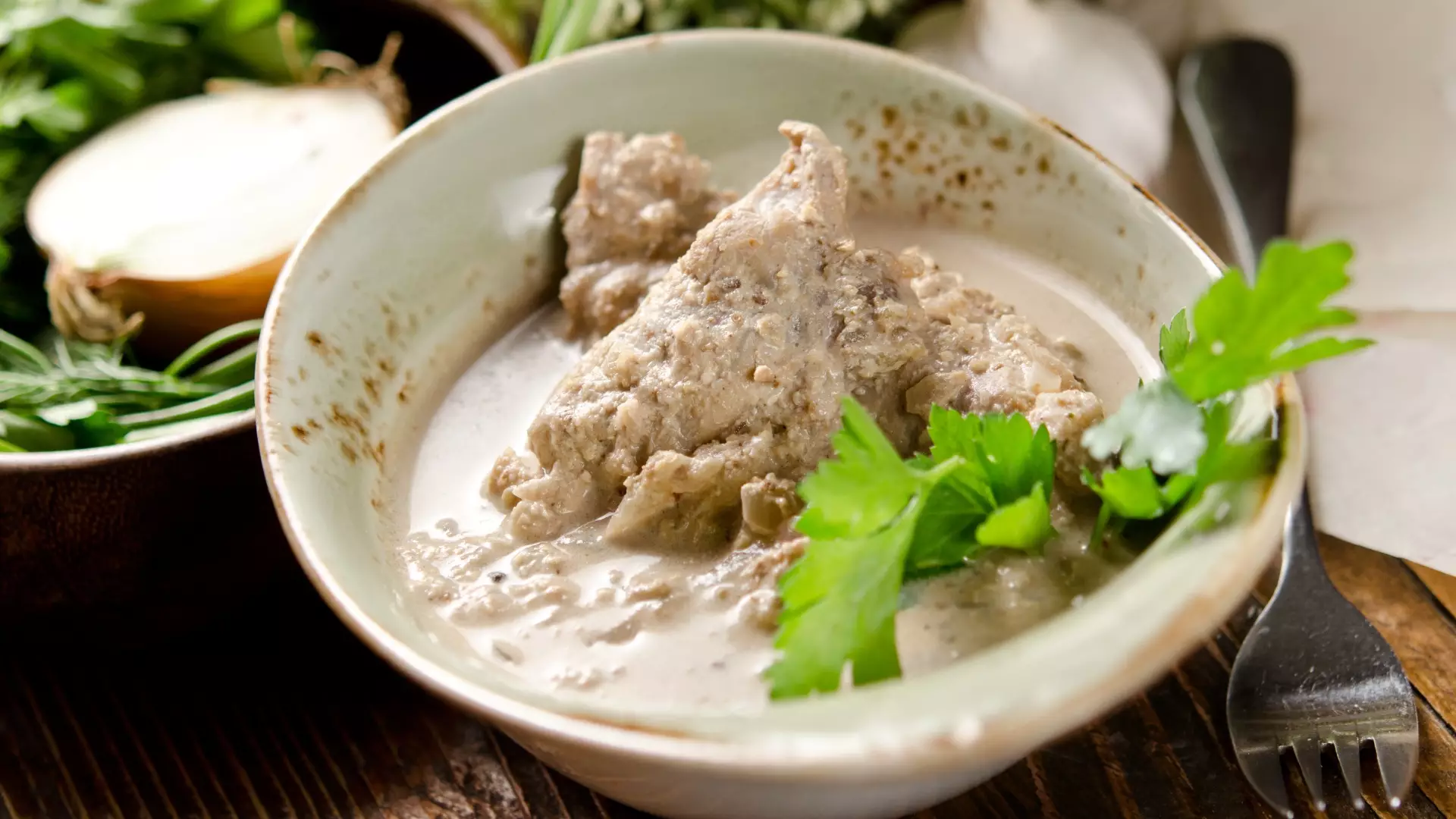Satsivi
Foreign and Domestic Parallels
At a glance, satsivi looks like an Indian curry, with a familiar color and consistency, and is made with some spices typical for Indian cuisine (fenugreek, cloves, and cinnamon), but the methods and other ingredients are very different. Indeed, culinary experts have not been able to substantiate the claim that Satsivi has Indian roots. Therefore, satsivi can be held aloft as a jewel of Georgia’s national cuisine, and a delightful blend of the country’s distinctive flavors.
The recipes for satsivi are extremely diverse, as the dish is made in every region of the country, from high in the mountains to low in the valleys. Almost every family has its own sacred satsivi recipe, passed down through generations. Some recipes instruct that onions be fried with a small amount of flour, while others add bay leaves or even scrambled eggs. Some refrain from cloves and cinnamon, while others exclude vinegar. The mainstays of all satsivi recipes are poultry (turkey or chicken) and walnuts.
Old and New Recipes for Satsivi
Despite satsivi being made all over Georgia, Barbare Jorjadze, in the first Georgian cookbook, called it “Gurian satsivi,” thus attributing the dish to a western region of the country. Compared to today’s recipes, Barbare’s satsivi is small on walnuts and big on vinegar.
Other recipes for satsivi are found in ethnographic records. According to some of these, the turkey for New Year should be confined and fed well for a few days and given walnuts before being slaughtered, so that the taste of walnuts would emanate from inside the meat. In addition, walnuts would be grated into thin flakes, with white onions finely chopped, fried, and seasoned.
According to the classic recipe, you should boil and then fry the turkey, cut it, remove the bones if desired, and then place it in a pot. Then, remove the fat from the boiled water once it has cooled, and boil the finely chopped onions over a low flame in the fat.
Meanwhile, process 800 grams of walnuts by hand (or with a blender), add two teaspoons of fenugreek, pepper, four cloves of crushed garlic, one teaspoon of dry coriander, a small amount of cinnamon (for a three-kilogram turkey, an amount that covers the tip of a teaspoon), and cloves, to be added gradually and carefully with the tip of a knife.
Then, add the fried onion and salt to taste, mix it together to create a uniform mass, and slowly add it into the broth, stirring it with a wooden spoon until it boils so that it does not become cloudy. As soon as it boils, pour it over the pieces of meat, boil again for two to three minutes, add the vinegar, and take it off the heat.
There is also a delicious recipe for Mingrelian satsivi which does not require any boiling. Here, the fried meat is placed in a fresh soup seasoned with specially-made ajika.
There is another old, almost forgotten recipe for satsivi, called “motsepili satsivi.” According to it, the well-rinsed, cut meat is placed in a heavy-bottomed pot, crushed walnuts are mixed into the water, and all the essential spices are added. The water should be at a depth of four fingers above the meat, and the lid is then put on and glued tightly with flour so that no air can escape, and it is left over a low flame for three hours. During that time, the meat becomes fully saturated with all of the flavors and the consistency thickens.
Walnut Oil
Whichever recipe you use to prepare this iconic dish, an essential element is walnut oil, easily made at home, which is poured over the satsivi at the end.
To make the oil, crush the walnuts twice, and crush garlic along with it (for one kilogram of walnuts, take one large bulb of garlic), add red pepper, saffron, and salt, mix it together well, and put as much of it into a bowl that you can still easily knead. Mash it well, make deep holes in a few places, and then fill those holes with boiling, frothy water. Close it tightly with a lid, and leave for five to seven minutes. Then, pour out the excess water and start kneading it. It will take two minutes and your hands will be covered in a yellowish-reddish liquid, which you can then pour into a separate jar and use for satsivi or any other walnut-based dish.
Useful Advice
-
The poultry for satsivi should be coated with corn flour or salt;
-
While boiling, you should put three or four onions into the broth and occasionally remove the foam, so the broth stays clear;
-
The broth should be left to cool so that the fat separates and is easy to remove; and
-
The vinegar must be white and added right at the end, so the broth does not darken and keeps its pleasant color.
Cookie Policy

